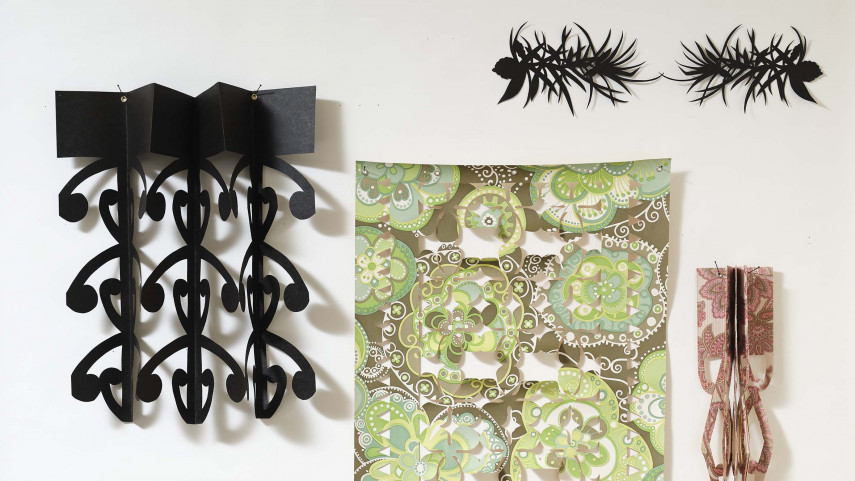
Kawakawa plant motif a feature of new exhibition

Share this story
A traditional healing plant indigenous to New Zealand is a central motif in a new exhibition at Christchurch Art Gallery Te Puna o Waiwhetū.
Ngāi Tahu artist Lonnie Hutchinson uses kawakawa plants both literally and symbolically in Ahu timataka/Trace elements, bringing together actual plantings on the Gallery’s forecourt with cut-out sculptural works in an upstairs gallery.
Using vintage wallpapers, sheets of acrylic and pieces of metal, she creates a compelling sculptural presence, says Christchurch Art Gallery Director Blair Jackson.
“The delicate, meticulous way she translates organic forms into black paper and metal ‘cut-outs’ makes them a captivating experience. These works and plantings are an expression of love and support for a community that has been through so much.”
The purifying qualities of Kawakawa make it an important healing plant used in rongoā, traditional Māori medicine, for centuries to treat a wide range of ailments. On a symbolic and spiritual level, kawakawa is a life-affirming plant, used in birthing and naming ceremonies; it is often rested at the feet of taonga whakairo, carvings of tūpuna in respect and remembrance. Kawakawa maintains an important role in tangi (funerals), where mourners may wear pare kawakawa, a headdress symbolising loss.
“In both their real and symbolic forms, Hutchinson’s rongoā plants express manaakitanga – kindness, kinship – and opportunities for gentle healing.”
Lonnie Hutchinson has worked with rongoā plant motifs throughout her career, says Mr Jackson.
“Sista7 (2003), one of the most beloved works in the Christchurch Art Gallery collection, also includes rongoā imagery.”
Ahu timataka / Trace elements opens on June 19
